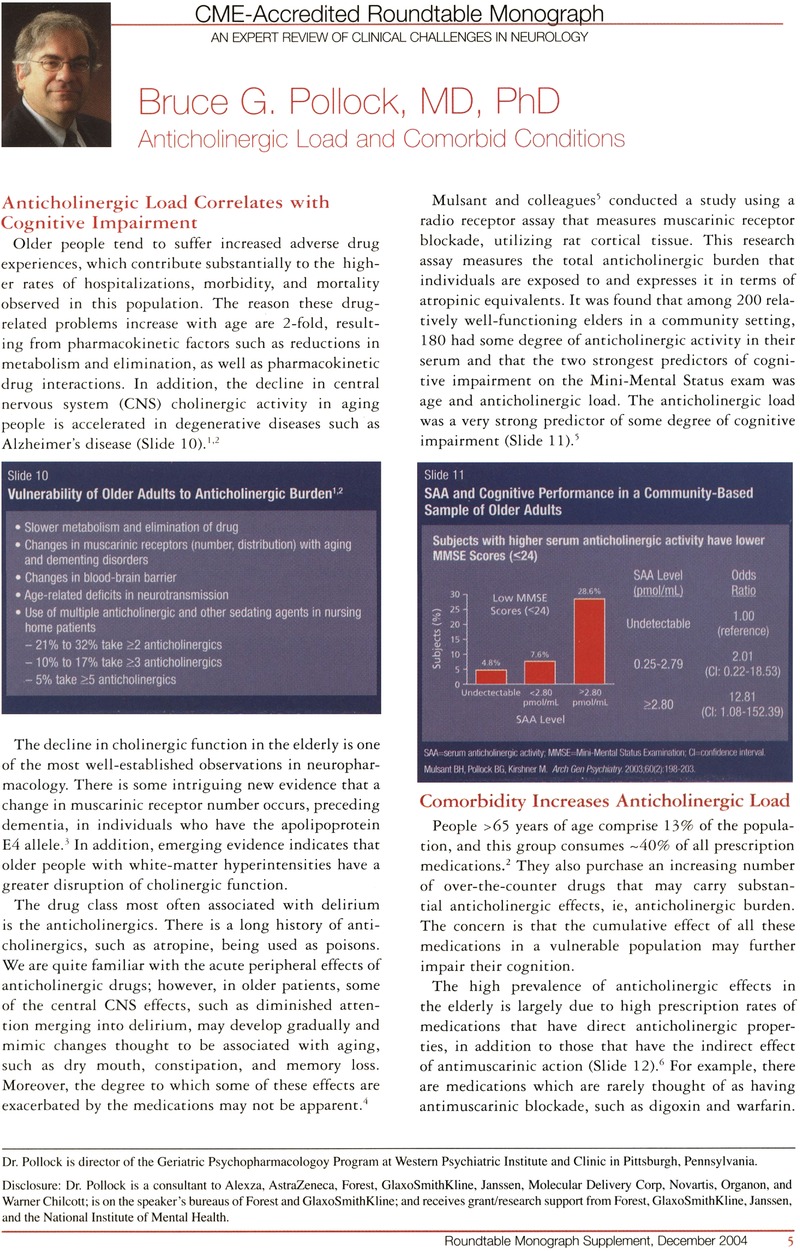No CrossRef data available.
Article contents
Anticholinergic Load and Comorbid Conditions
Published online by Cambridge University Press: 07 November 2014
Abstract
An abstract is not available for this content so a preview has been provided. Please use the Get access link above for information on how to access this content.

- Type
- CME-Accredited Roundtable Monograph
- Information
- Copyright
- Copyright © Cambridge University Press 2004
References
1.Blazer, DG, Federspiel, CF, Ray, WA, Schaffner, W. The risk of anticholinergic toxicity in the elderly: a study of prescribing practices in two populations. J Gerontol. 1983;38:31–35.Google Scholar
2.Pollock, BG. Geriatric psychiatry: psychopharmacology: peneral principles. In: Sadock, BJ, Sadock, VA, eds. Kaplan & Sadock's Comprehensive Textbook of Psychiatry. Baltimore, MD: Williams & Wilkins; 2000:3086–3090.Google Scholar
3.Cohen, RM, Podruchny, TA, Bokde, AL, et al.Higher in vivo muscarinic-2 receptor distribution volumes in aging subjects with an apolipoprotein E-epsilon4 allele. Synapse. 2003;49(3):150–156.Google Scholar
4.Feinberg, M. The problems of anticholinergic adverse effects in older patients. Drugs Aging. 1993;3:335–348.CrossRefGoogle ScholarPubMed
5.Mulsant, BH, Pollock, BG, Kirshner, M, Shen, C, Dodge, H, Ganguli, M. Serum anticholinergic activity in a community-based sample of older adults: relationship with cognitive performance. Arch Gen Psychiatry. 2003;60(2):198–203.Google Scholar
6.Tune, LE. Serum anticholinergic activity levels and delirium in the elderly. Sem Clin Neuropsychiatry. 2000;5:149–153.Google ScholarPubMed
7.Rovner, BW, David, A, Lucas-Blaustein, MJ, Conklin, B, Filipp, L, Tune, L. Self-care capacity and anticholinergic drug levels in nursing home patients. Am J Psychiatry. 1988;145(1):107–109.Google Scholar
8.Pardridge, WM. CNS drug design based on principles of blood-brain barrier transport. J Neurochem. 1998;70(5):1781–1792.Google Scholar
9.Pakulski, C, Drobnik, L, Millo, B. Age and sex as factors modifying the function of the blood-cerebrospinal fluid barrier. Med Sci Monit. 2000;6(2):314–318.Google Scholar




